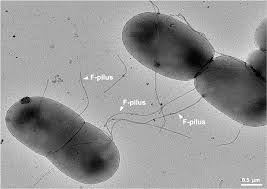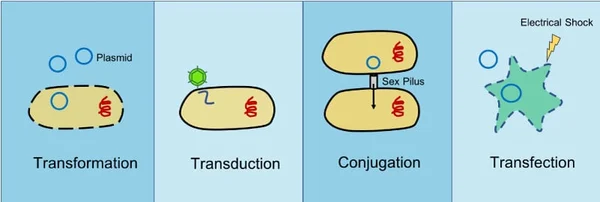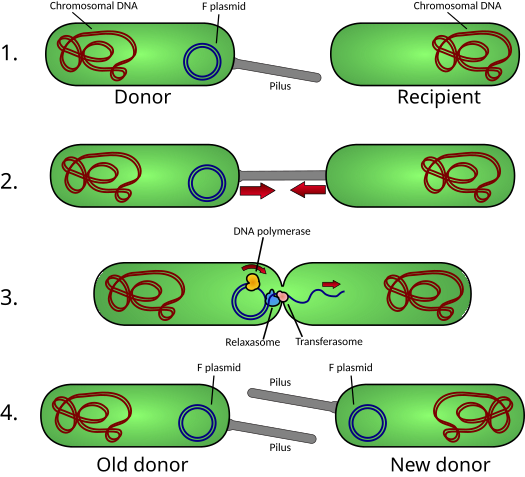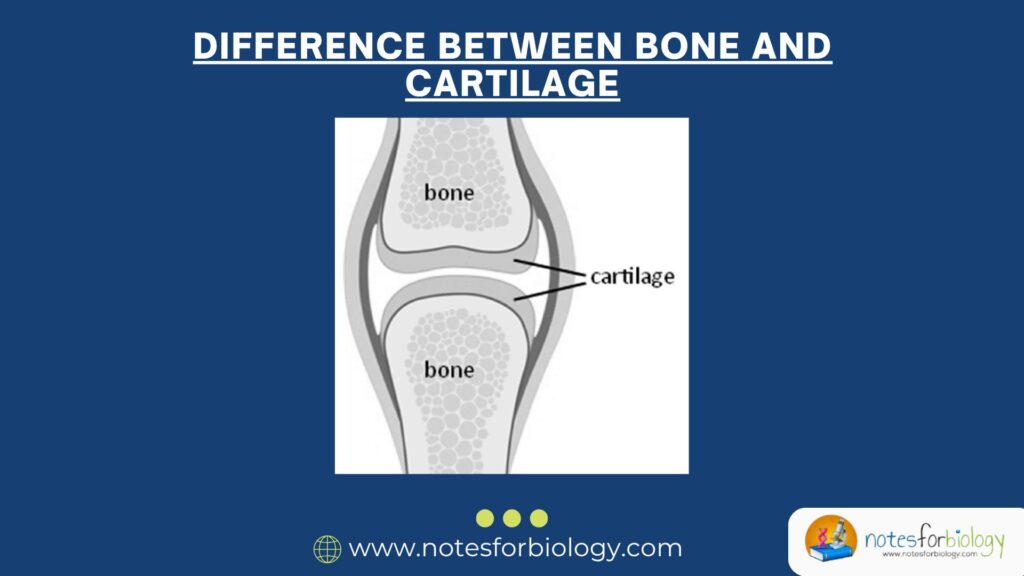What is Bacterial Conjugation?

Bacterial conjugation is a fascinating process where bacteria exchange genetic material, primarily in the form of plasmids. These plasmids are extrachromosomal DNA molecules that can replicate independently of the bacterial chromosome. This exchange of genetic material allows bacteria to acquire new traits, such as antibiotic resistance or the ability to metabolize new substances.

Table of Contents
The Steps of Bacterial Conjugation
Formation of the Sex Pilus
The process begins when a donor bacterium, carrying a plasmid, forms a sex pilus. This pilus is a hollow tube-like structure that extends from the donor cell’s surface.

Cell-to-Cell Contact
The sex pilus attaches to a recipient bacterium, creating a physical bridge between the two cells.
Plasmid Transfer
The donor cell then transfers a copy of its plasmid through the sex pilus to the recipient cell. This transfer is facilitated by enzymes that nick the plasmid DNA and unwind it. The plasmid DNA is then replicated and transferred strand by strand.
Plasmid Establishment
Once the entire plasmid has been transferred, the recipient cell closes the nick in the DNA, completing the plasmid replication. The recipient cell now contains a complete copy of the plasmid and can express its genes.
The Mechanism of Plasmid Transfer
The transfer of the plasmid is a complex process that involves several key mechanisms:
Rolling Circle Replication
The most common mechanism for plasmid transfer is rolling circle replication. In this process, a single-stranded nick is made in the plasmid DNA. One of the strands, the 3′ end, is used as a template for DNA synthesis. As the new strand is synthesized, the old strand is displaced, forming a circle. The new strand is then transferred to the recipient cell.
Relaxosome Formation
The plasmid DNA is transferred as a protein-DNA complex called a relaxosome. The relaxosome consists of the plasmid DNA and a protein called the relaxase. The relaxase is responsible for nicking the plasmid DNA and initiating transfer.
Transfer Machinery
The transfer of the plasmid is mediated by a protein complex called the type IV secretion system. This system is located in the inner membrane of the donor cell and is responsible for transporting the relaxosome through the sex pilus.
Significance of Bacterial Conjugation
Bacterial conjugation is a crucial mechanism for the horizontal transfer of genes. This process allows bacteria to adapt to changing environments and acquire new traits. For example, conjugation can contribute to the spread of antibiotic resistance, which is a major public health concern.
In addition to antibiotic resistance, conjugation can also play a role in the spread of virulence factors, toxins, and other harmful traits. Understanding the mechanisms of bacterial conjugation is essential for developing strategies to combat these problems.
Conclusion
Bacterial conjugation is a remarkable process that allows bacteria to exchange genetic material, primarily in the form of plasmids. This exchange can lead to the acquisition of new traits, such as antibiotic resistance or the ability to metabolize new substances.
The process involves the formation of a sex pilus, cell-to-cell contact, and the transfer of the plasmid DNA. The transfer is facilitated by rolling circle replication, the relaxosome, and the type IV secretion system.
Frequently Asked Questions (FAQ)
Write about Plasmid Transfer ?
Plasmid transfer refers to the movement of plasmids, which are small, circular DNA molecules, between bacteria or other cells. Plasmids often carry genes that provide advantageous traits, such as antibiotic resistance or the ability to degrade certain compounds, and can be shared among bacteria through several mechanisms.
What is Cell to Cell contact ?
Cell-to-cell contact refers to the direct physical interaction between two or more cells, facilitating communication, signaling, and sometimes the exchange of materials like genetic information or nutrients.
Related Articles




